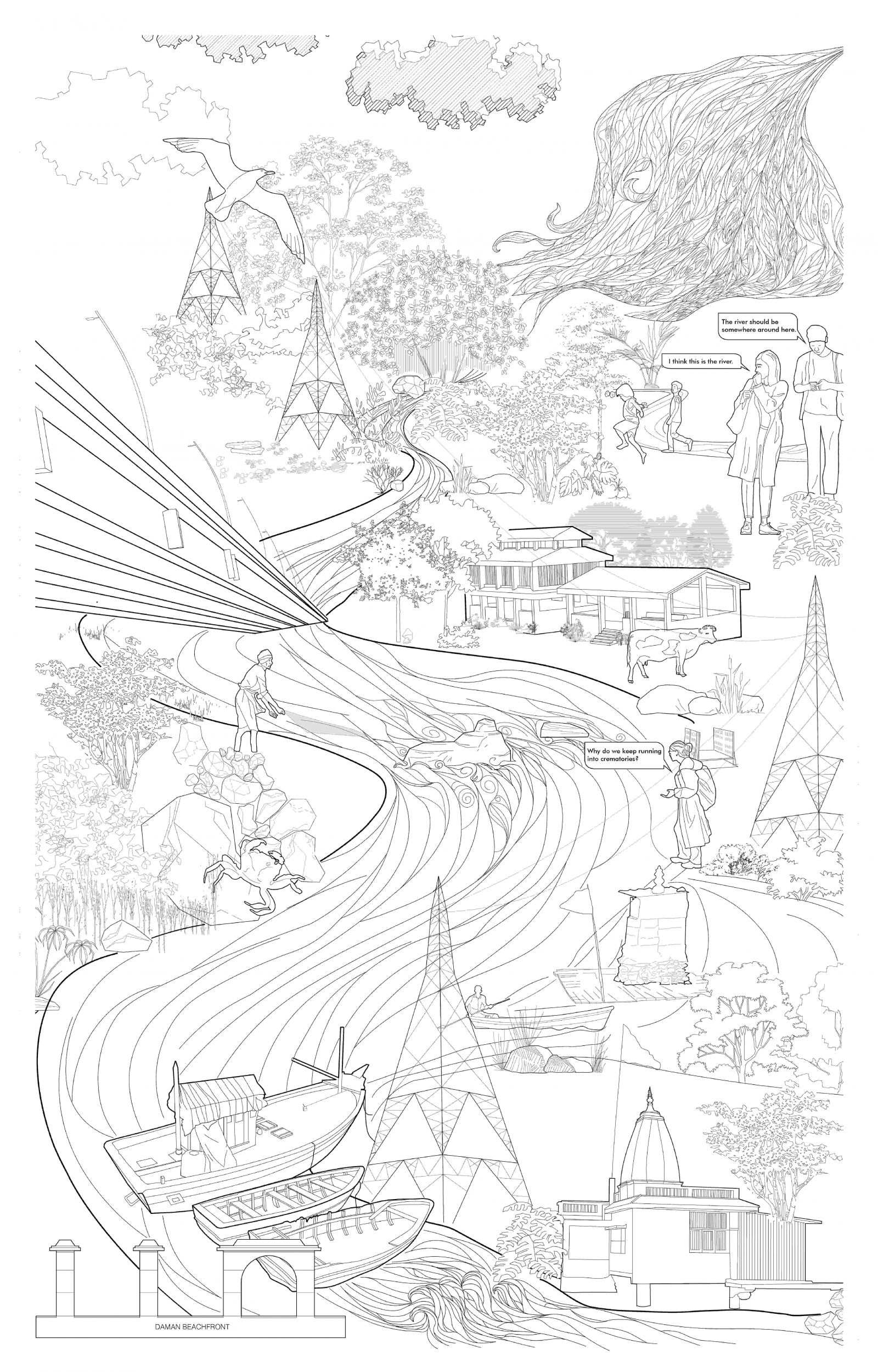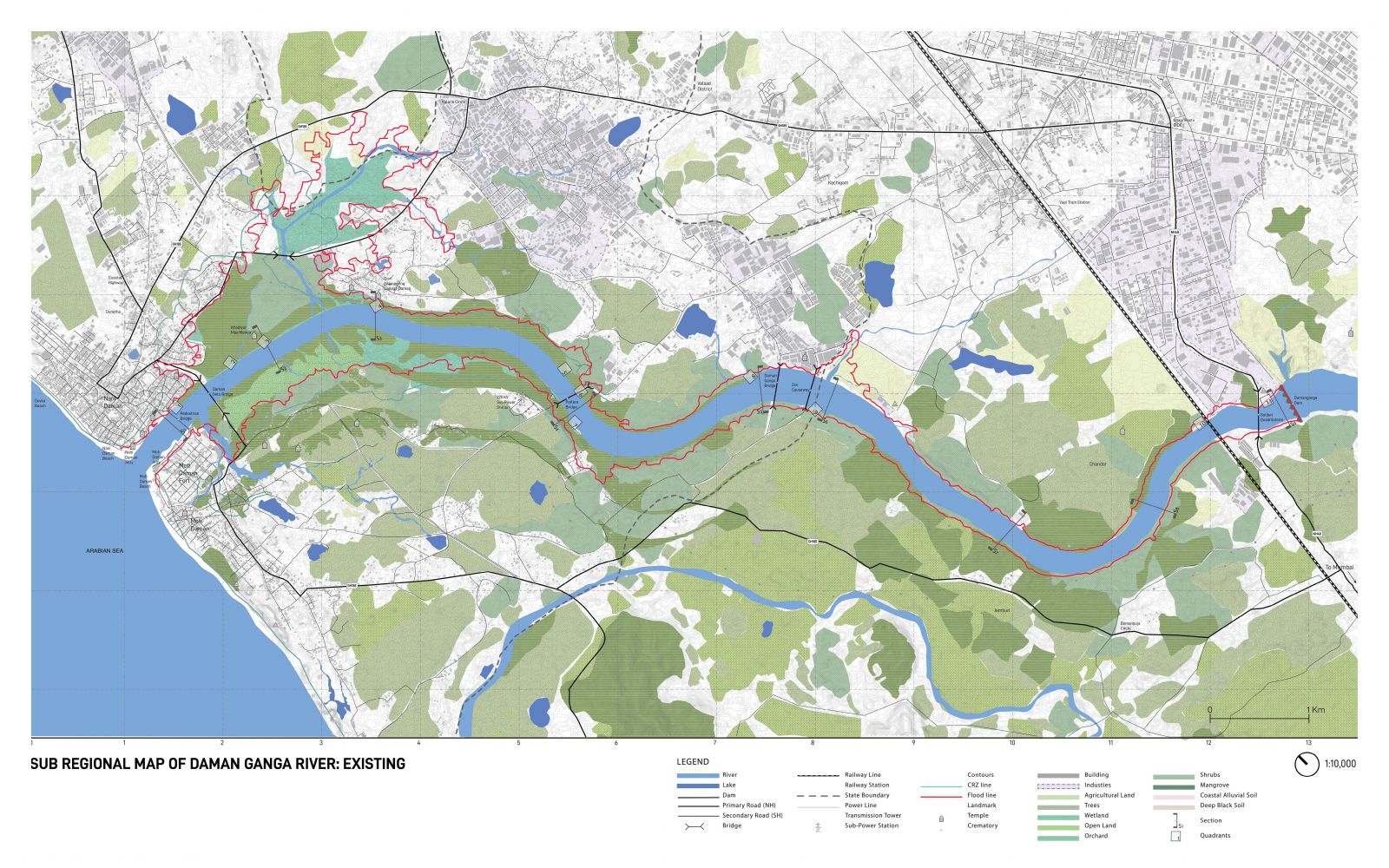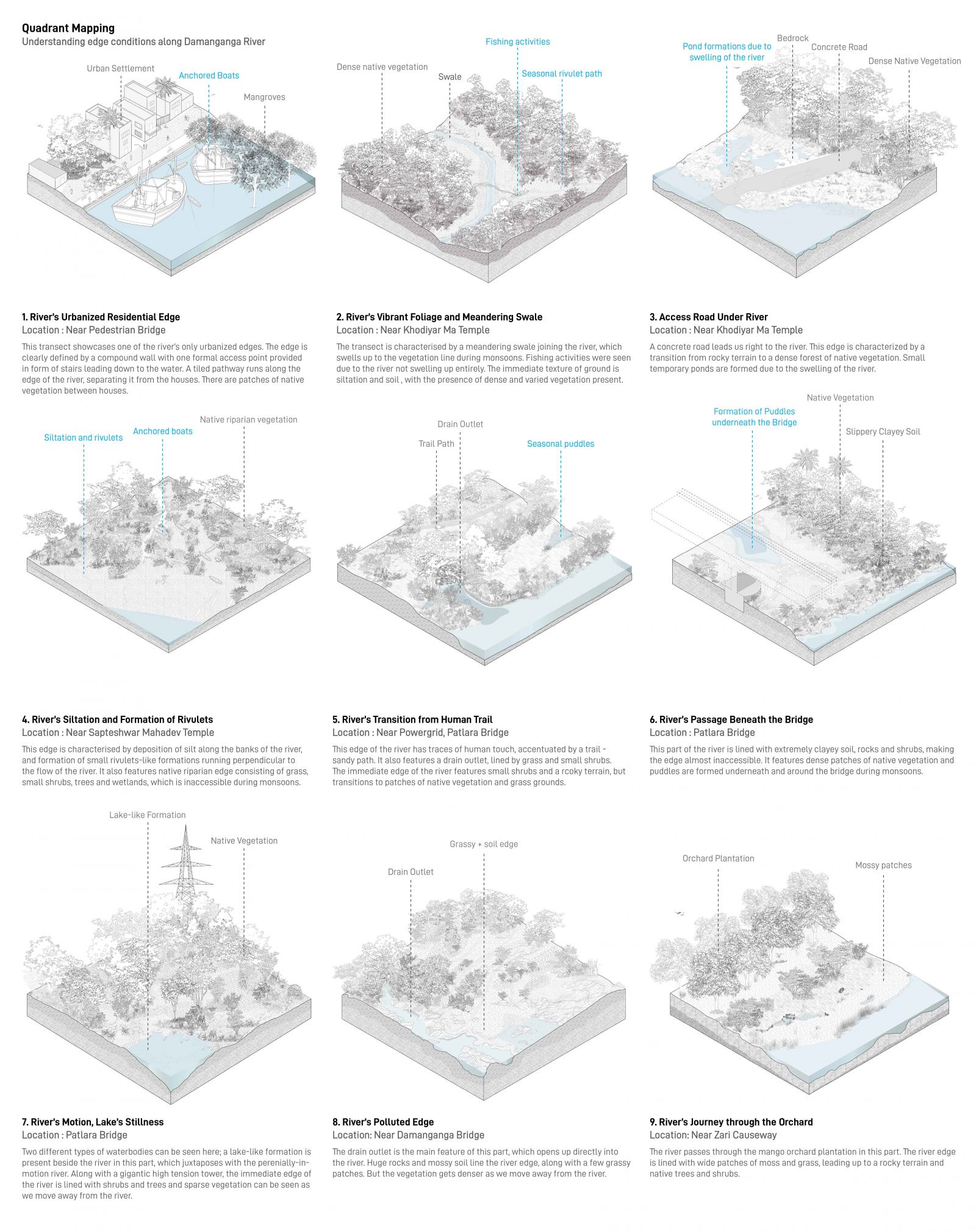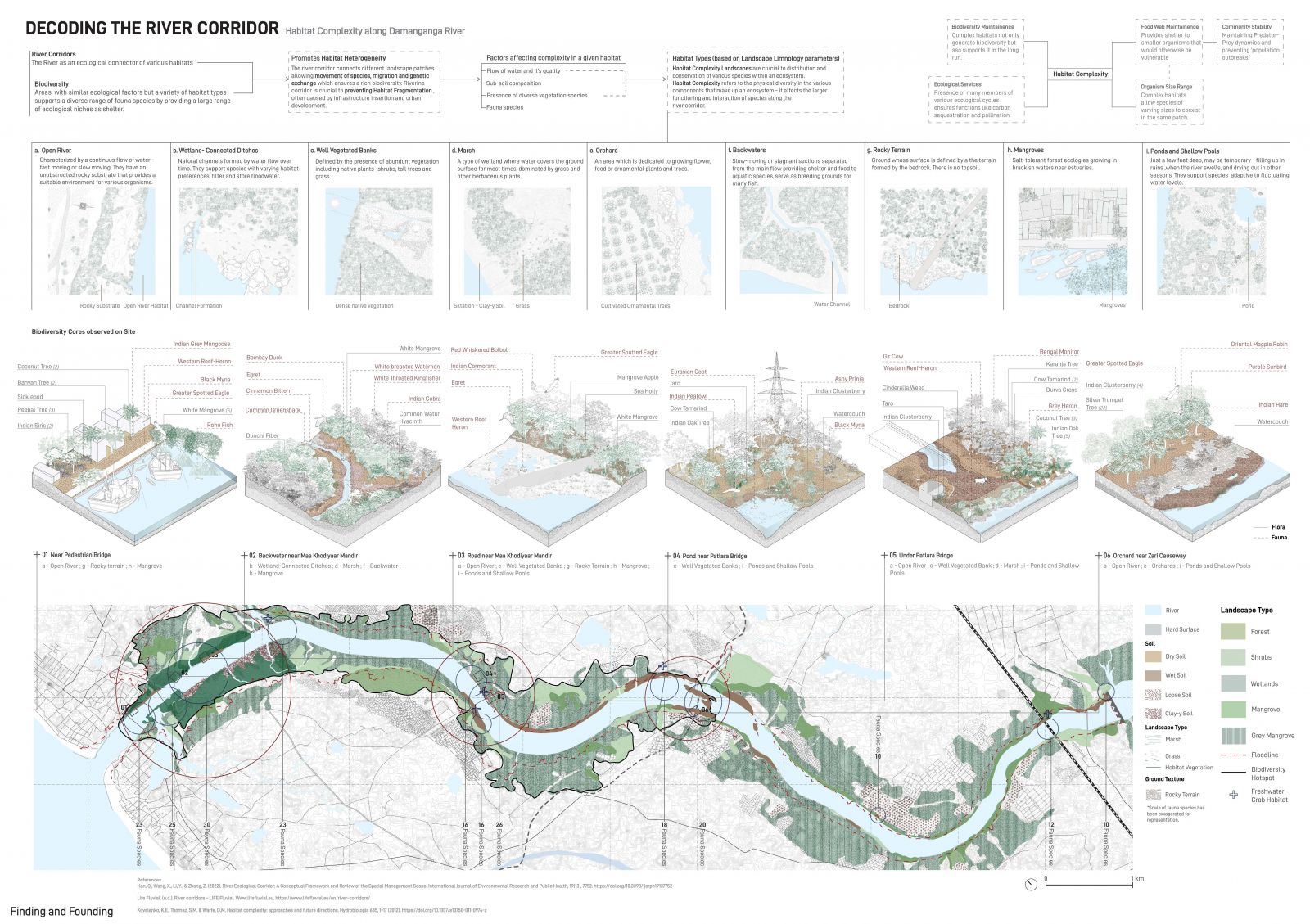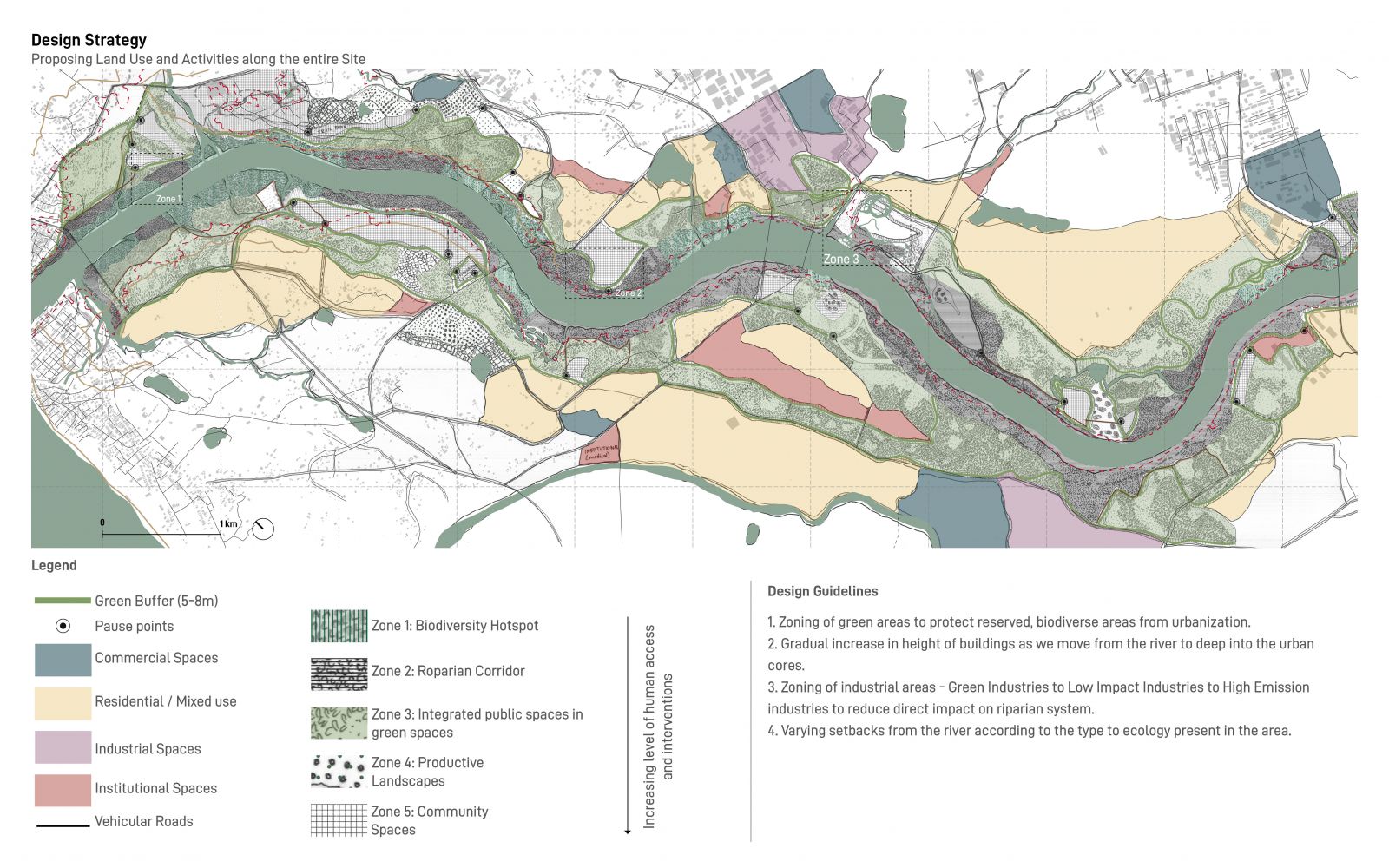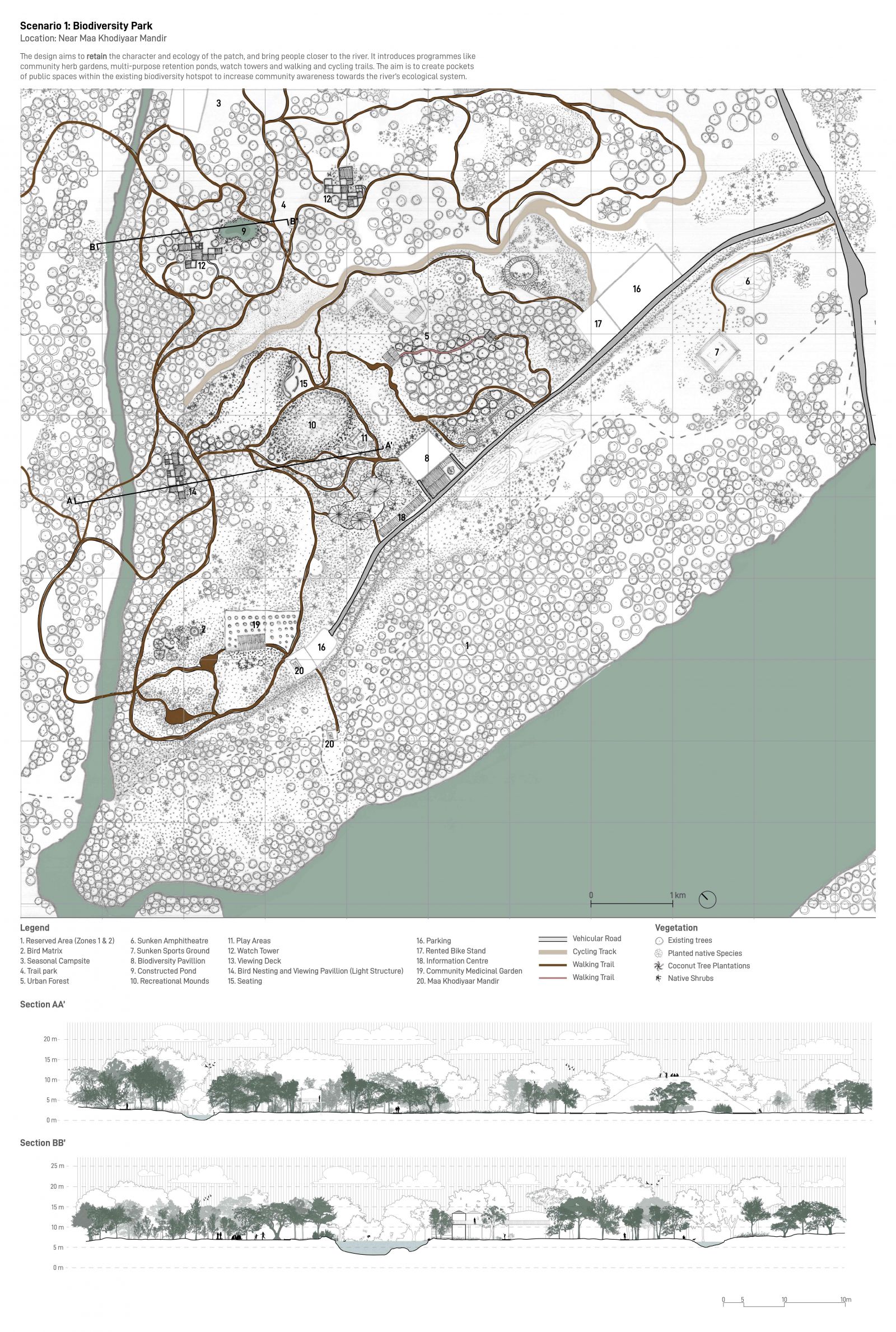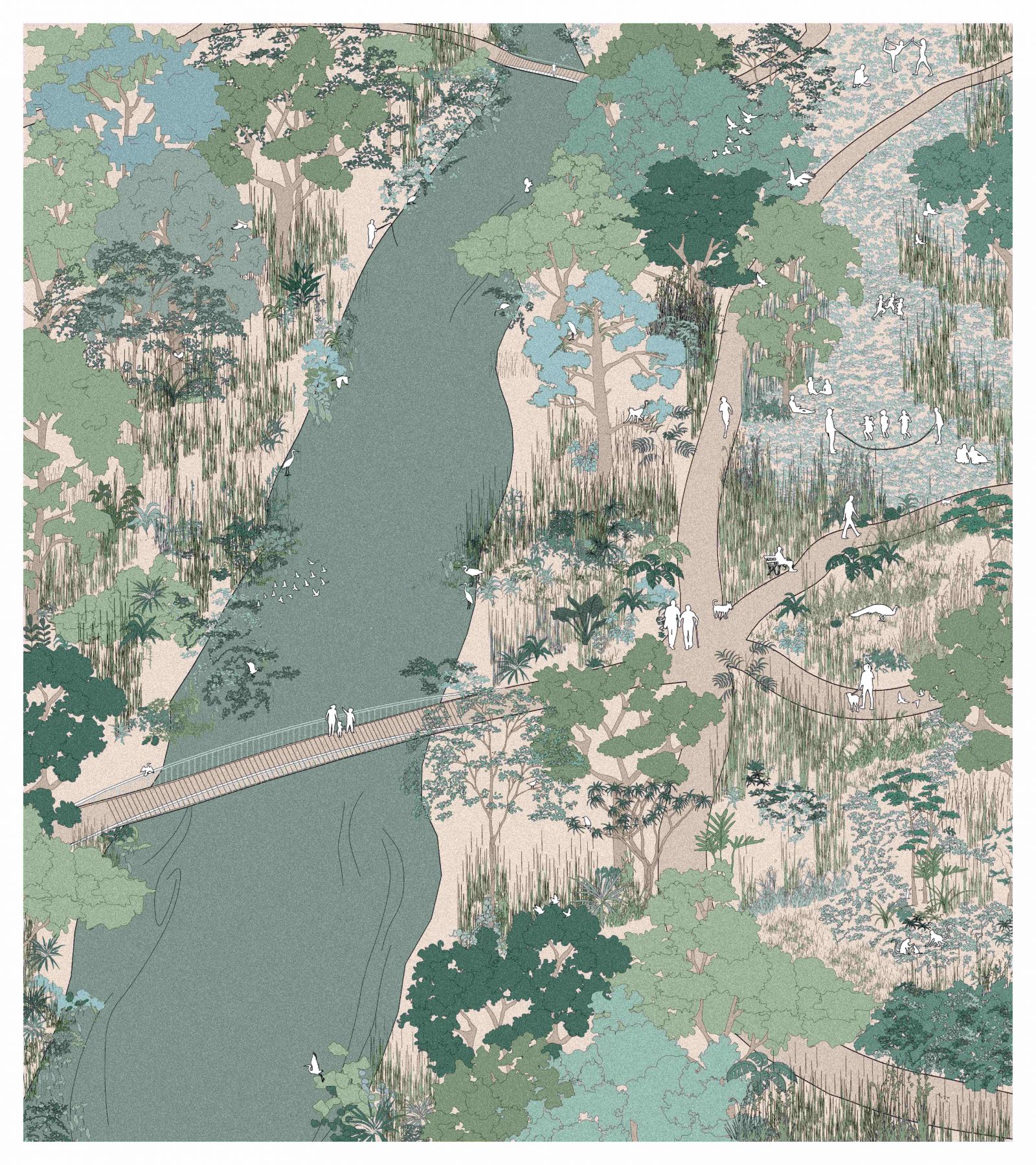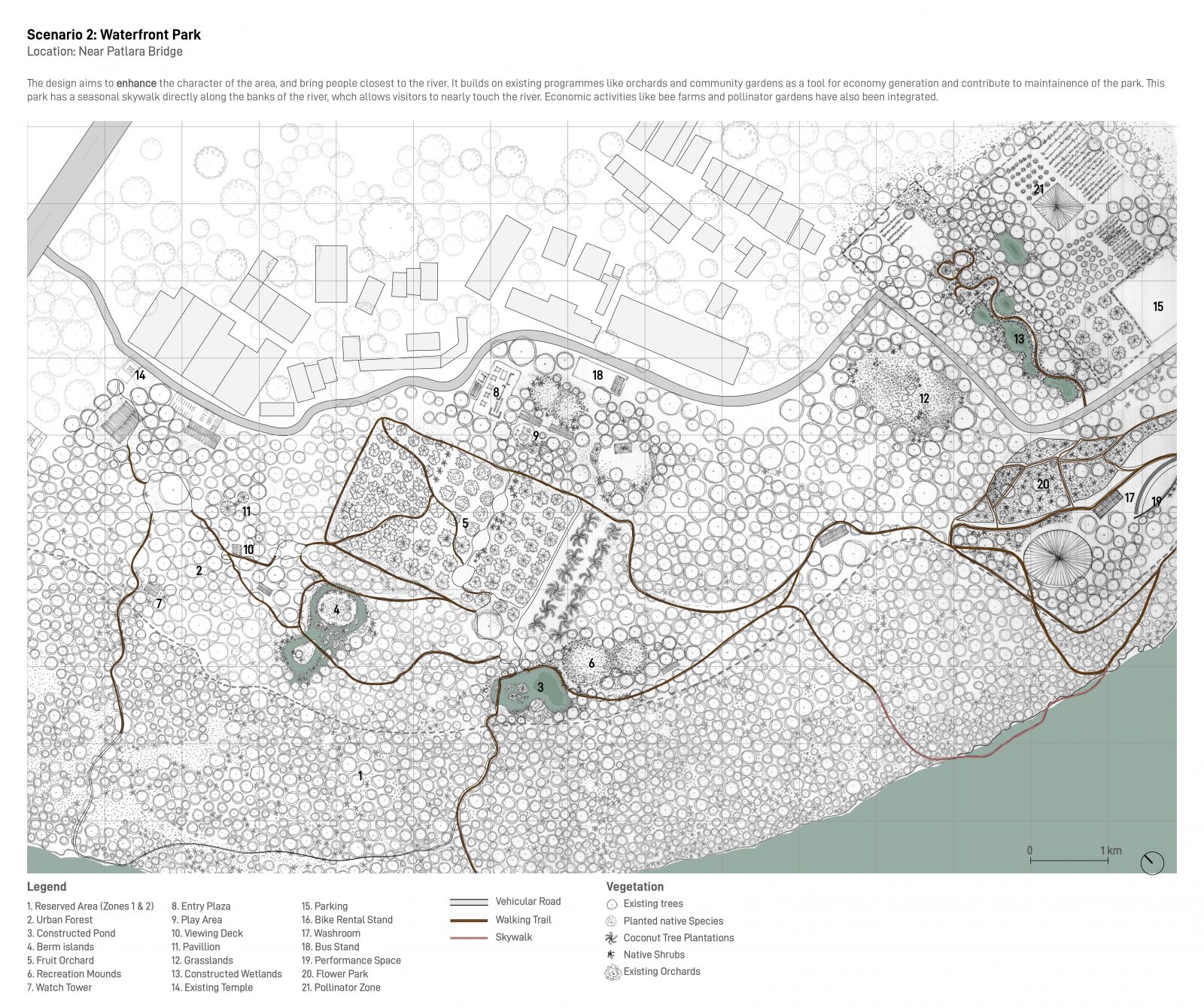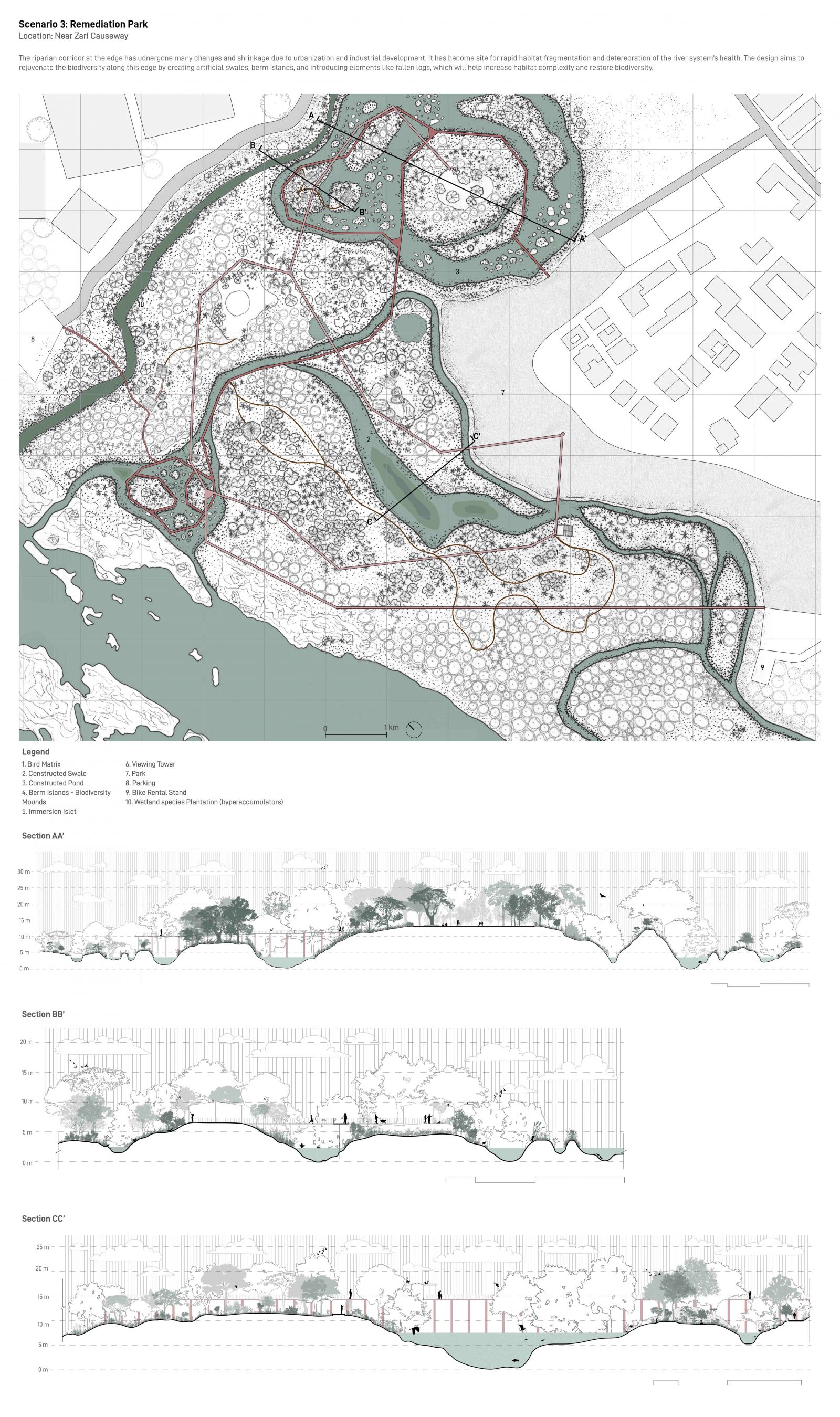Your browser is out-of-date!
For a richer surfing experience on our website, please update your browser. Update my browser now!
For a richer surfing experience on our website, please update your browser. Update my browser now!
The Daman Ganga River's riparian edge is home to many bird and animal species that depend on the unique habitat conditions formed at various points along the river. The aim of this project is to establish a continuous riparian corridor along the Damanganga River to prevent habitat fragmentation. The project will also weave people-centric spaces with the various zones of vegetation that will be preserved as the riparian corridor.
View Additional Work